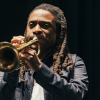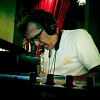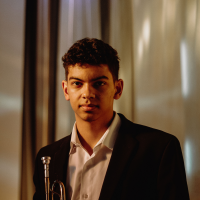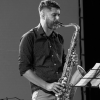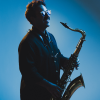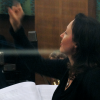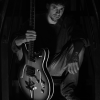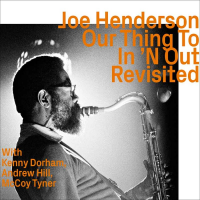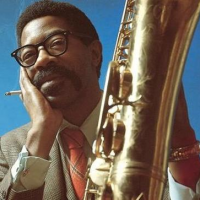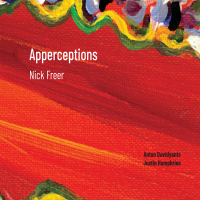Home » Jazz Musicians » Joe Henderson
Joe Henderson

The tenor saxophonist Joe Henderson was born on April 24, 1937 in a small city called Lima Ohio midway between Dayton and Toledo. He spent his childhood and adolescence in Lima in a family of 15 children where he was exposed to a variety of musical styles. By the time he was a high school student he was already arranging and writing music for the school band and other local outfits. It was in high school that a music teacher introduced him to the tenor saxophone. After graduation he enrolled first at the Kentucky State College to study music and then moved on to Wayne State University in Detroit. There he had as classmates several future jazz greats such as Yusef Lateef and Donald Byrd. From 1960-1962 he enlisted in the US army where he led several small jazz groups and won first place in a musical competition and was sent on a tour to entertain the troops all over Japan and Europe where he met a few of the expatriate musicians.
Early career: the Blue Note years
After being discharged from the army he traveled to New York and sat in at Birdland with Dexter Gordon and other local musicians. During one of these sessions he was introduced to the trumpeter Kenny Dorham who was so impressed by his musicianship that he arranged for Joe Henderson’s first recording session as a leader with Blue Note Records. This resulted in the record Page One (1963) which to this day remains one of his most critically acclaimed albums. This recording also spawned the standard Blue Bossa. During the following four years he led 4 other sessions for Blue Note and recorded as sideman on over to 2 dozen albums for the same label. Some of these records are today classics of not only the label but also of jazz music. Andrew Hill’s Point of Departure, Larry Young’s Unity, Horace Silver’s Song For My Father and Lee Morgan’s Sidewinder are just a few examples of those fruitful years. In addition to creating timeless music Joe Henderson’s style also evolved during this period to incorporate all genres of jazz from hard bop to avant garde from latin to soul-jazz.
Middle period: the Milestone, Verve and experimentation years
From 1967-1979 he recorded primarily for the Milestone label with occasional sessions as a leader for the Verve label and one, sorely underappreciated, record for the Enja label called Barcelona. Over this “middle period” of his career his style gradually evolved from the powerful acoustic style of post bop to fusion, electric music, avant garde and back to post-bop. Through all the changes, however, his virtuosity remained intact even when the some of the later records from this period were overall not as creative as his other works. During these years he also composed prolifically and co-led groups with Freddie Hubbard and Herbie Hancock. His forays outside of the realm of jazz led him to play with Blood Sweat and Tears and other rock and R and B groups. In the early seventies Joe Henderson became involved in teaching as well and moved to San Francisco.
Read moreTags
McCoy Tyner Quartet: New York Reunion
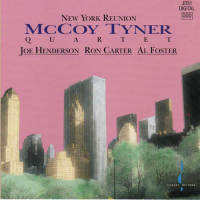
by Jack Kenny
McCoy Tyner's New York Reunion is a fine example of late-period recording, presenting the jazz masters in a quartet setting that draws deeply on tradition while brimming with contemporary energy. Originally released in 1991 on Chesky Records, the album features Tyner at the piano alongside three equally distinguished collaborators: Joe Henderson (tenor saxophone), Ron Carter (bass) and Al Foster (drums). The title itself hints at a reconvening of New York's post-bop elite, each artist bringing decades of innovation to the ...
Continue ReadingHat Hut Records at Fifty
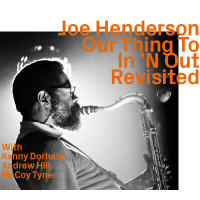
by John Eyles
The three albums below are some of the ezz-thetics and First Visit album releases that arrived in 2025 adorned with a sticker featuring a large 50 on it plus the explanation, “celebrating 50 years of Hat Hut records." Rewinding fifty years, we find that Hat Hut was founded by Werner X. Uehlinger in 1975, the first Hat Hut release being Black Magic Man by a Joe McPhee quartet which had been recorded live in concert at Vassar College, New York, ...
Continue ReadingAndrew Hill, Ralph Burns, Joe Henderson

by David Brown
In the set I'd like to remember jazz pianist/composer Andrew Hill who was born 94 years ago on June 30, 1931. Hill's music defied categorization for over four decades with its enigmatic and sophisticated musical style. Tracks include two Hill works, a cover by drummer Chad Taylor and a collaboration with pianist Jason Moran. New releases will follow from Julian Shore, Amina Claudine Myers, Eric Reed, James Brandon Lewis, Jeremiah Chiu & Marta Sofia Honer and Tessa Souter. Then, some ...
Continue ReadingMcCoy Tyner / Joe Henderson: Forces Of Nature: Live At Slugs'

by Joshua Weiner
How does one go about nominating Zev Feldman for a Nobel Peace Prize? Time and again, the intrepid “Jazz Detective" tracks down unknown, unheard, un-even-hoped-for sonic artifacts, painstakingly brushes away the audio dust and grime, and puts us front and center at events that rewrite the history of jazz. Forces of Nature: Live at Slugs' another Feldman's project, in collaboration with Blue Note President Don Was, is quite possibly his greatest, a double album of such excitement, beauty, and power ...
Continue ReadingMcCoy Tyner / Joe Henderson: Forces Of Nature: Live At Slugs'

by Mike Jurkovic
When recordings like Forces of Nature: Live at Slugs' seemingly falls from yonder jazz sky, we must stop to thank those swinging stars above for our grand fortune. Because despite all our flaws--a broken politic, a poisoned planet, constant wartime bickering--we are a fortunate, if mostly undeserving, race of peculiarities. That becomes especially apparent when random, instantaneous works of art and human affinity like this grace our path. Located at 242 East 3rd Street between Avenue B and ...
Continue ReadingJoe Henderson: Power to the People

by C. Andrew Hovan
Beginning with 1963's Page One, Joe Henderson led a series of five albums for the Blue Note label that firmly established his reputation as a unique and budding artist with something vital to say. He was one of many artists at that time who utilized his Blue Note contract to document his every move while establishing his creative muse during this process. Trumpeter Kenny Dorham would be a major factor in the success of his first few sessions, with drummer ...
Continue ReadingHorace Silver: Live New York Revisited

by Stefano Merighi
Benchè il profilo artistico di Horace Silver sia preso a modello in modo paradigmatico per definire lo stile hard bop nel jazz moderno, è altresì interessante notare come Silver, sin dalle sue prime uscite, abbia sempre cercato di evitare gli schemi predeterminati che soprattutto le etichette discografiche cercavano di replicare dopo aver trovato la formula del successo. Ad esempio, Silver non amava le scalette miste, quelle cioè che infilavano d'abitudine uno standard proveniente da Tin Pan Alley all'interno di un ...
Continue ReadingJoe Henderson: Power to the People

Source:
JazzWax by Marc Myers
A new jazz style emerged in the late 1960s that wasn't an extension of hard bop or free jazz. For a brief period—following the assassination of Martin Luther King Jr. in April 1968 and the onset of fusion in the mid-1970s—a new Black power expression wrapped in pan-Africanism appeared in the works of Black journalists, books on the Black condition by Black intellectuals, folk paintings by Black artists and music by Black jazz artists. During these years you could hear ...
read more
Jazz Musician of the Day: Joe Henderson

Source:
Michael Ricci
All About Jazz is celebrating Joe Henderson's birthday today!
The tenor saxophonist Joe Henderson was born on April 24, 1937 in a small city called Lima Ohio midway between Dayton and Toledo. He spent his childhood and adolescence in Lima in a family of 15 children where he was exposed to a variety of musical styles. By the time he was a high school student he was already arranging and writing music for the school band and other local outfits. ...
read more
Jazz Musician of the Day: Joe Henderson

Source:
Michael Ricci
All About Jazz is celebrating Joe Henderson's birthday today!
The tenor saxophonist Joe Henderson was born on April 24, 1937 in a small city called Lima Ohio midway between Dayton and Toledo. He spent his childhood and adolescence in Lima in a family of 15 children where he was exposed to a variety of musical styles. By the time he was a high school student he was already arranging and writing music for the school band and other local outfits. ...
read more
Joe Henderson: Mosaic Box

Source:
JazzWax by Marc Myers
In the 1960s, tenor saxophonist Joe Henderson recorded on close to 30 Blue Note albums, only five of which were under his name. But most of those sideman sessions were just as significant, since Henderson was a powerful ingredient on anyone's recording date. For example, he is a dominant soloist on Kenny Dorham's Una Mas, Lee Morgan's The Sidewinder, Horace Silver's Song for My Father, Herbie Hancock's The Prisoner and others. What made Henderson special was his dry tone and ...
read more
The Complete Joe Henderson Blue Note Studio Sessions Now Available on Mosaic Records

Source:
All About Jazz
When you get your copy of Mosaic’s new five-CD collector’s set, The Complete Joe Henderson Blue Note Studio Sessions, you’ll be holding a master key to unlocking 1960s jazz. That’s a big statement. But when you consider how much was happening from 1963 to 1966, the years covered by this collection, and contemplate how many different looks he provided through that time period, you can’t ignore his significance as a saxophonist and as someone central to the music’s development. In ...
read more
Jazz Musician of the Day: Joe Henderson

Source:
Michael Ricci
All About Jazz is celebrating Joe Henderson's birthday today!
The tenor saxophonist Joe Henderson was born on April 24, 1937 in a small city called Lima Ohio midway between Dayton and Toledo. He spent his childhood and adolescence in Lima in a family of 15 children where he was exposed to a variety of musical styles. By the time he was a high school student he was already arranging and writing music for the school band and other local outfits. ...
read more
Jazz Musician of the Day: Joe Henderson

Source:
Michael Ricci
All About Jazz is celebrating Joe Henderson's birthday today!
The tenor saxophonist Joe Henderson was born on April 24, 1937 in a small city called Lima Ohio midway between Dayton and Toledo. He spent his childhood and adolescence in Lima in a family of 15 children where he was exposed to a variety of musical styles. By the time he was a high school student he was already arranging and writing music for the school band and other local outfits. ...
read more
Jazz Musician of the Day: Joe Henderson

Source:
Michael Ricci
All About Jazz is celebrating Joe Henderson's birthday today!
The tenor saxophonist Joe Henderson was born on April 24, 1937 in a small city called Lima Ohio midway between Dayton and Toledo. He spent his childhood and adolescence in Lima in a family of 15 children where he was exposed to a variety of musical styles. By the time he was a high school student he was already arranging and writing music for the school band and other local outfits... ...
read more
Hot Track: Punjab

Source:
JazzWax by Marc Myers
On Joe Henderson's 1965 album In 'n Out, the listener enjoyed five giants for the print of one. The tenor saxophonist and trumpeter Kenny Dorham were joined by powerful cookers: pianist McCoy Tyner and drummer Elvin Jones were two-thirds of John Coltrane's rhythm section, while bassist Richard Davis had recorded with Eric Dolphy on Out to Lunch (1964). Recorded for Blue Note in April 1964, In 'n Out features three Henderson originals and two by Dorham. This is a perfect ...
read more
Jazz Musician of the Day: Joe Henderson

Source:
Michael Ricci
All About Jazz is celebrating Joe Henderson's birthday today!
The tenor saxophonist Joe Henderson was born on April 24, 1937 in a small city called Lima Ohio midway between Dayton and Toledo. He spent his childhood and adolescence in Lima in a family of 15 children where he was exposed to a variety of musical styles. By the time he was a high school student he was already arranging and writing music for the school band and other local outfits... ...
read more







































